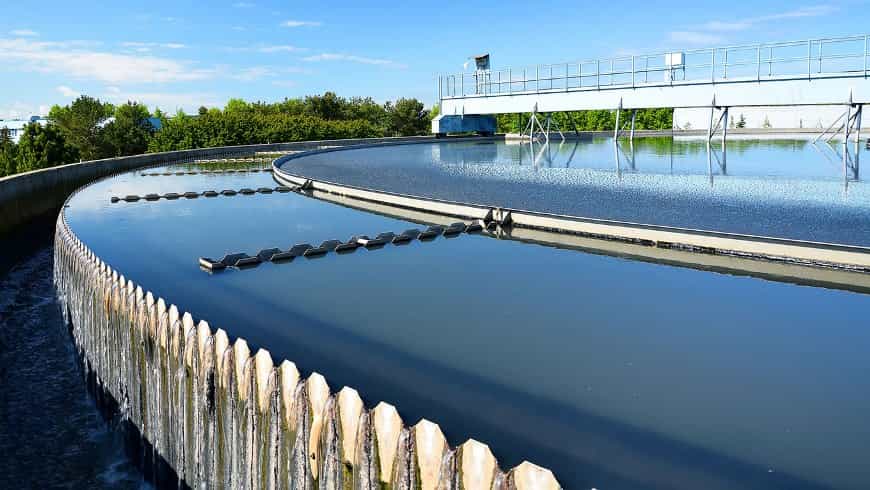Lets take a look at the Difference Between Primary and Secondary Wastewater Treatment
Depending on the location of your property and local Council regulations you may need Primary and Secondary Wastewater Treatment.

Firstly what is wastewater?
Wastewater is the used water from toilets, showers, baths, kitchen sinks, laundries and industrial processes. Around 99% of wastewater is water, and the other 1% is contaminating waste and solids.
Wastewater can come from any of the following places :
- Shops
- Homes
- Farms
- Factories
- Offices
- Restaurants
- Public Toilets
- Aged Care Facilities
- Medical Facilities
- Fuel and transport depots
- Quarries
- Mines
Types of wastewater
Domestic Wastewater
Water that comes from kitchen sinks, showers, toilets, baths and laundries in your office or home.
Industrial Wastewater
This water comes from industrial and manufacturing plants, such as a food processing. This can also include water that has some alternative purposes, such as water to clean or cool machinery.
Finally we thought it valuable to mention Stormwater
Stormwater is a type of wastewater that runs off various areas, such as roofs, gardens, roads, paths and gutters. This water flows into stormwater drains, especially after it rains, can flow straight into our waterways untreated.
This water needs to keep away from transportation areas.
What is Primary Treatment?
Primary wastewater treatment is the process of removing solid matter from wastewater. The wastewater flows into tanks and the solids settle on the bottom and require retention time. The grease and scum then rise to the top. This is a very slow process. The primary process is also called the ‘primary phase’ or the ‘septic process’. The lighter wastewater and matter then leave and go to the secondary pre-treatment chamber. The anaerobic bacteria (bacteria that does not need oxygen to live) uses the nasties in the water as food and they begin to break them down.
What is Secondary Treatment?
The secondary wastewater treatment process uses anaerobic microorganisms and retention time to breakdown and remove the remaining waste and other small particles. The waste and the microorganisms are both found in the sludge, and remove both the remaining solids and nutrients through bacterial composition. Secondary treatment utilises naturally occurring biological processes. This means the wastewater oxygen level vary throughout and do not stay at one constant quantity. This results in microorganisms being either aerobic (require oxygen) or anaerobic (does not require oxygen), depending on the stage. These systems require air blowers running for a long time to reinvigorate and aerate the liquids.
So what is the difference between Primary and Secondary Wastewater Treatment?
The main difference is the way each respective treatment is processed. Primary treatment works on sedimentation, where solids separate from the water through several different tanks. In contrast, secondary treatment uses aeration, biofiltration and the interaction of waste throughout its process.
Primary Treatment
- This process generally utilises mechanical equipment to breakup larger particles
- In primary treatment larger particles are removed
- Slow
- The primary wastewater treatment utilises filtration and sedimentation processes
Secondary Treatment
- Secondary treatment uses biological processes for extraction
- With secondary wastewater treatment smaller particles are removed
- Slower
- The secondary treatment uses anaerobic or aerobic breakdown processes
Consider the Worm Farm Wastewater Treatment System
This powerful organic wastewater treatment system effectively processes sewage, all household wastewater and organic waste. This includes food and vegetation, as well as some weeds. Combined with naturally occurring organisms, the worm liquid opens up and improves the quality of your soil. This allows you to reuse and recycle it as liquid fertiliser under your garden, lawns and bush land. Independently tested the Worm Farm Waste System is super fast at processing sewage, wastewater and organic waste. In fact 20 times faster than any normal septic system.
If you need Primary or Secondary Wastewater Treatment it can be easily achieved with the Worm Farm Waste System
- With a single chamber we strain off the solids
- Low running costs. Approx $20 per year based on a 4 bedroom house
- No service contracts
- Secondary Treatment via a sand filter or by a proprietary filtration system which can achieve advanced secondary
- Our pumps are very quiet & only activated when systems are in use
- No smells
- 20 times faster than septic or aerated systems in processing sewage solids
- 10 Year System Warranty
- Thousands of systems installed
- Residential, Commercial & Rural Systems
- Approved in VIC, NSW, SA, QLD & NT
- We help with Council Permit Applications
- Company employed installers are used to install your system
- Can reduce household organic waste by up to 90%
- Aerobic system driven by a wind driven ventilator
- Natural liquid fertiliser is added to you soil
- Environmentally friendly and sustainable
- Suitable for all climates – Alpine and Tropical areas
- Weed control – Dispose of ragwort, dock, thistle
- On some hilly sites no power is required

